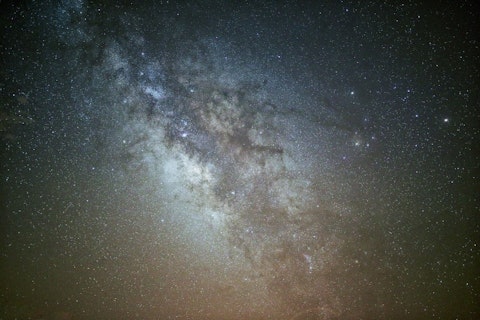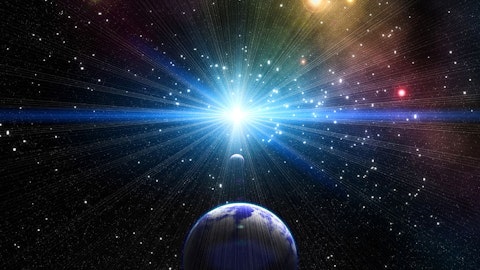Our list of the 10 easiest galaxies to see with telescope or binoculars, should give you a good idea where to start with observing galaxies, but if you do not have proper experience in observing the moon, the planets, and the stars/constellations with your chosen instrument, then we must recommend you to start with those objects first. If you are interested you can check out whether some galaxies on this list can be found on our list of the 10 Biggest Galaxies in the Universe.
For a beginner stargazer, binoculars can be a better choice than the telescope, because they offer a wider view – you can look with both eyes through them, and are much more portable and easier to use than a telescope, however they are best for observing constellations. Although observing galaxies from our list through the binoculars(at least 10x50mm) is possible, you should know that telescopes, especially bigger ones offer a much more detailed view. If you don’t have any instrument and are still just thinking about buying one check out BinocularSky it holds a lot of information on binocular astronomy, a guide to buying the right binoculars, and some reviews. If you are thinking of buying a telescope check out SkyAndTelescope for a guide.

Galaxies can be divided into three main types by their shape: Elliptical, Spiral, and Irregular. Elliptical galaxies have spheroid shapes, but because we can only see them in two dimensions, they look like elliptical, or oval-shaped disks. Spiral galaxies have a spherical structure in their center, called the bulge. Around the bulge is the disk, made up of dust, gas and younger stars, and it forms arm structures. Around the bulge and some of the disk, is the halo and it contains old clusters of stars, known as global clusters. Irregular galaxies do not have a specific structural pattern, hence their name. Galaxy with an exceptionally fast rate of star formation is classified as the starburst galaxy. We will not include in our list, our Galaxy, the Milky Way Galaxy, because it’s kind of redundant and obvious answer.
Apparent magnitude is the measure of the brightness of a celestial object as seen by an observer on the Earth. The lower the magnitude, the brighter the object – the Sun has an apparent magnitude of -26.74; while the brightest star in the sky Sirius has an apparent magnitude of -1.46. An apparent magnitude of 6.5 is an approximate limit for naked-eye observation of stars under the good conditions, and somewhere between 7 and 8 under extremely good conditions. We are using apparent magnitudes of galaxies for our ranking. For our list we’ve searched for 10 galaxies with the lowest apparent magnitudes, using BinocularSky. Different astronomical databases list different apparent magnitude values for the same objects, however these variations are small and should not affect content or order of our list. While the galaxies on our list of the 10 easiest galaxies to see with telescope or binoculars are the brightest of galaxies, and thus “easiest to see”, that does not mean that they are all visible from the same location, because they definitely aren’t. Making a list of easiest galaxies to see with telescope or binoculars that would hold 10 galaxies for any geographic latitude was not very practical and realistic, however wherever you are, you should probably be able to see at least 5 of them.
10. Cat’s Eye Galaxy (M94;NGC 4736) Apparent Magnitude 8.2
Located in the constellation of Canes Venatici lies Messier 94, a spiral galaxy, also known as the Cat’s Eye galaxy. It is a galaxy with low ionization nuclear emission region(LINER), approximately 16 million light years away from the Earth. M94 has two starburst rings of interstellar material, which is a rare feature. The outer ring is not a closed stellar ring, but complex spiral arm structure – however that can be seen only in mid-infrared and ultraviolet wavelengths. M94 requires extremely good conditions to be seen with binoculars, and even then appears only as a small, dim patch of light, it is best observed during the spring.
9. The Southern Pinwheel Galaxy (M83;NGC 5263) Apparent Magnitude 8.0
At number nine on our list of easiest galaxies to see with telescope or binoculars we have Messier 83 that is situated in the eastern section of the constellation of Hydra. Similar in appearance to the famous Pinwheel galaxy (M101), it features well-defined spiral arms, and because of that it’s nicknamed the southern Pinwheel galaxy. M83 is a barred spiral galaxy, and is also a starburst galaxy. Its center is extraordinary, because it features a double nucleus – an illusion that it has two supermassive black holes instead of one. Six supernovas have been observed, and remnants of almost 300 supernovas have been found in M83, so considering that amount of supernova activity, if you are observing it there is probably much bigger chance that you will discover a new supernova than with other galaxies.
8. The Sculptor Galaxy (NGC 253) Apparent Magnitude 8.0
The Sculptor galaxy is an intermediate spiral galaxy in the constellation Sculptor, classified as a starburst galaxy, discovered by Caroline Herschel – the first woman to be awarded a Gold Medal of the Royal Astronomical Society. It is also known as the Silver Coin galaxy. Only one supernova has been discovered in NGC 253 which is a relatively low number of supernovas for a starburst galaxy.
7. Bode’s Galaxy (M81;NGC 3031) Apparent Magnitude 7.8
Located in the constellation Ursa Major lies Bode’s galaxy, a spiral galaxy discovered by Johann Elert Bode. The galaxy is 11.8 million light-years from the Earth and it features a near exceptionally well-defined spiral arms. Only one supernova was detected in M81, but it was the brightest supernova in the northern part of the sky since 1954. M81 features galactic nucleus that contains a supermassive black hole that is 15 times the mass of the black hole in the Milky Way Galaxy. Very near M81 is M82, a starburst galaxy known as the Cigar galaxy, together they form a very impressive view.
6. The Pinwheel Galaxy (M101;NGC 5457) Apparent Magnitude 7.7
The Pinwheel galaxy, the next one on our list of easiest galaxies to see with telescope or binoculars is an extremely large galaxy with a diameter that is nearly the double of our Milky Way Galaxy, it is located in Ursa Major constellation, 22 million light-years away from the Earth. Four supernovas have been recorded in M101. Because it’s so large and face-on, ideal observational conditions are necessary, so that it can be seen through binoculars as a large dim patch of light.
5. Centaurus A (NGC 5128) Apparent Magnitude 7.6
On the fifth place on our list of 10 easiest galaxies to see with telescope or binoculars is the nearest giant galaxy to the Milky Way, located in the constellation Centaurus. There is no definitive type for Centaurus A, but the theory is that it’s an elliptical galaxy in the process of devouring a dusty barred spiral galaxy – it’s fitting that its nickname is the Hamburger galaxy. NGC 5128 is a starburst galaxy, probably as a result of a collision with another galaxy.
4. The Triangulum Galaxy (M33;NGC 598) Apparent Magnitude 6.2
The Triangulum Galaxy is a spiral galaxy, located in the constellation Triangulum. It is approximately 2.97 million light-years away from the Earth, and for most people, it is the most distant object visible to the naked eye – because distance approximations vary it is possible that that title belongs to M31.
3. The Andromeda Galaxy (M31) Apparent Magnitude 4.3
In the constellation of Andromeda, lies the Andromeda galaxy, visible to the naked eye under right conditions. Andromeda galaxy’s two relatively close companions, M32 and M110 can be seen through binoculars. Only one supernova has been recorded in M31. Andromeda galaxy features a double nucleus. It is the largest galaxy of the Local Group.
2. The Small Magellanic Cloud (NGC 292) Apparent Magnitude 2.8
For the most part located in the constellation Tucana and partly in constellation Hydrus is the Small Magellanic Cloud(SMC), a dwarf irregular galaxy. Studying the stars in the SMC enabled Henrietta Leavitt to discover the period-luminosity of Cepheid variable stars, which gave astronomers ability to measure the distance between the Earth and the faraway galaxies. Both the SMC and its larger companion the Large Magellanic Cloud(LMC), are not visible north of about 17 to 20 degrees North latitude – this is why they weren’t known to the astronomers from the northern hemisphere until the Ferdinand Magellan’s around the world voyage. And now, let’s see the number one on our list of easiest galaxies to see with telescope or binoculars.
1. The Large Magellanic Cloud Apparent Magnitude 0.9
On the border of the constellations Dorado and Mensa, lies The Large Magellanic Cloud – a satellite dwarf galaxy of the Milky Way galaxy. LMC is the third closest galaxy to the Milky Way Galaxy. It is about 160,000 light years away, while SMC is about 190,00 light-years away from the Earth. LMC is only about 1/10th the mass of the Milky Way Galaxy. A very active starbirth region in the LMC is called the Tarantula Nebula. A supernova was detected near this region in 1987, and it was the brightest supernova seen in 300 years. LMC is a beautiful sight that can be seen with a naked eye, and along with its companion (SMC) it might be a good source of inspiration for a trip into the southern hemisphere for adventurous stargazers from the northern hemisphere. With this amazing celestial object, we finish our list of the 10 easiest galaxies to see with telescope or binoculars.





